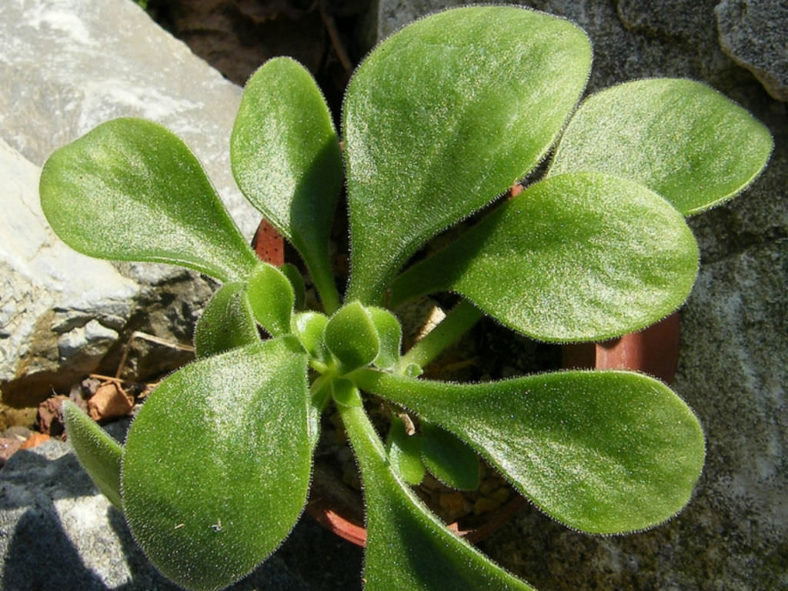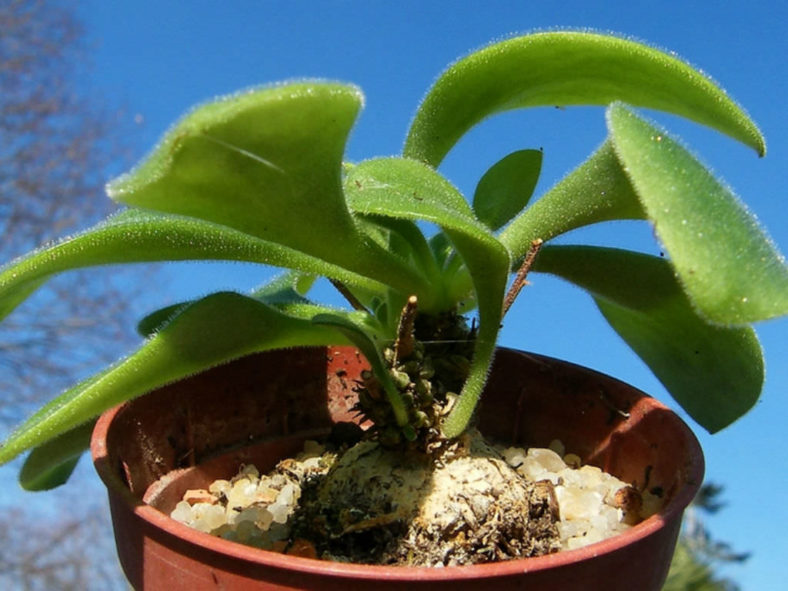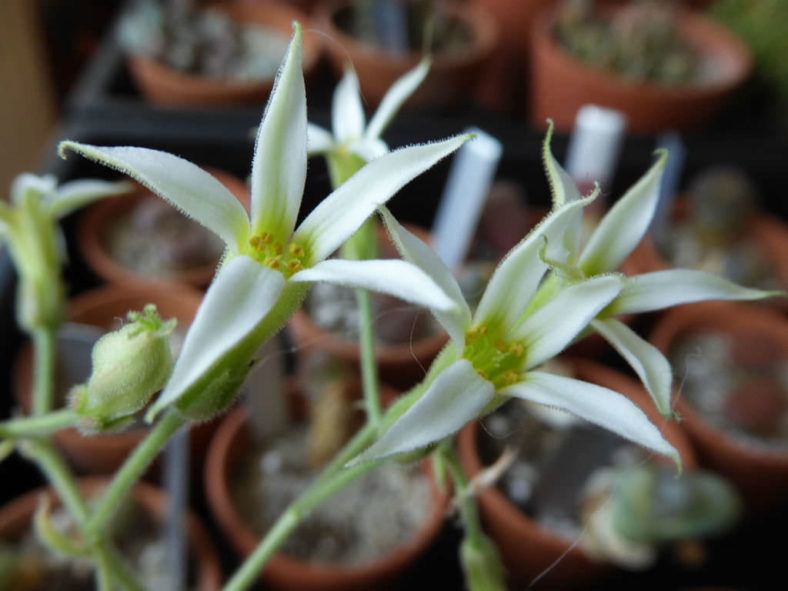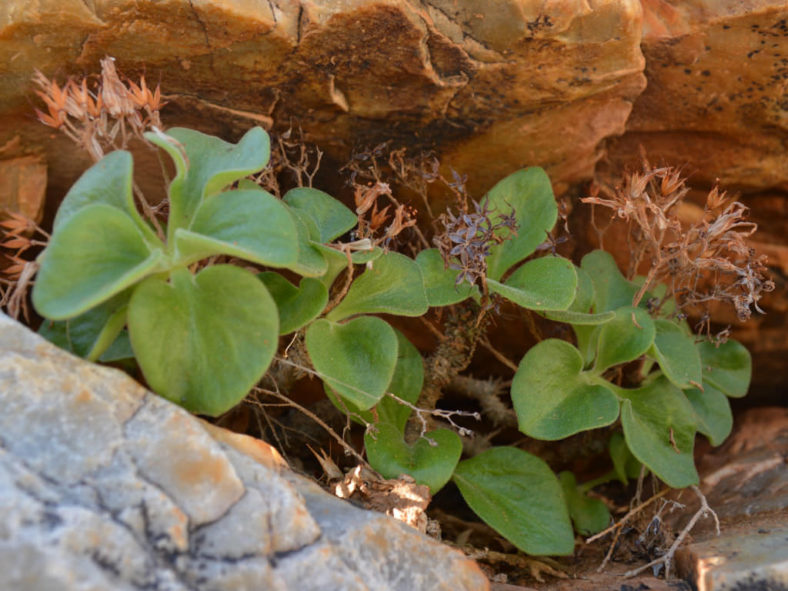Scientific Name
Tylecodon ellaphieae van Jaarsv.
Synonym(s)
Tylecodon cremnophilus
Scientific Classification
Family: Crassulaceae
Subfamily: Kalanchoideae
Genus: Tylecodon
Etymology
The specific epithet "ellaphieae (el-la-FY-aye)" honors Ellaphie Ward-Hilhorst (1920-1994), a well-known South African botanical artist.
Origin
Tylecodon ellaphieae is native to South Africa. It occurs on sheer quartzitic sandstone cliff faces along the Rosyntjieberg massif in the northeastern Richtersveld, Northern Cape.
Description
Tylecodon ellaphieae is a dwarf, sparingly branched succulent with 2 to 8 erect to ascending branches that grow from a tuberous base. It can grow up to 2.4 inches (6 cm) tall. The caudex is light maroon with yellowish-grey peeling bark and can reach up to 1.2 inches (3 cm) in diameter. The branches are gray to grey-green with truncate phyllopodia and can grow up to 2 inches (5 cm) long and about 0.3 inches (0.8 cm) in diameter. The leaves are thick, fleshy, green, and covered with glandular hairs. They are egg-shaped, with a short stalk and upper surface channeled at the base, measuring up to 1.8 inches (4.5 cm) long and 1.2 inches (3 cm) wide.
The flowers appear in flat-topped clusters on upright stalks when the plant sheds its leaves in mid-summer. The flower stalks can grow up to 2 inches (5 cm) tall. The corolla is tubular, light green outside, yellow-green inside, with white lobes, and can grow up to 0.6 inches (1.5 cm) long.

How to Grow and Care for Tylecodon ellaphieae
Soil: A well-draining soil mix is the key to healthy Tylecodon. Poor drainage and overwatering most commonly cause root rot in both indoor and outdoor plants.
Light: Tylecodons can survive direct sunlight exposure without problems, but they will grow beautifully in shadow.
Hardiness: Tylecodon ellaphieae can withstand temperatures as low as 25 to 50 °F (-3.9 to 10 °C), USDA hardiness zones 9b to 11b.
Watering: As winter is the growing season, Tylecodons require careful watering from winter until the spring. Get the soil wet, and then wait until it is dry before watering again. In the summer, reduce watering to once per month.
Fertilizing: Use liquid fertilizer for cacti and other succulents in winter.
Repotting: You do not need to repot these plants often. You can do it when the container becomes too small or shallow.
Propagation: Tylecodons can be cultivated either by seed or by cuttings.
Learn more at How to Grow and Care for Tylecodon.
Toxicity of Tylecodon ellaphieae
Tylecodon species are adapted to avoid animal predation being poisonous. Therefore, keep them away from children, pets, and livestock.
Links
- Back to genus Tylecodon
- Succupedia: Browse succulents by Scientific Name, Common Name, Genus, Family, USDA Hardiness Zone, Origin, or cacti by Genus
Photo Gallery
Click on a photo to see a larger version.


